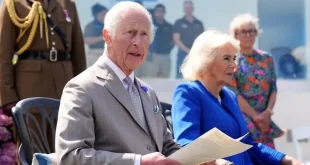What indeed? After owners the Isle of Wight Council themselves published an expert report which described years of underinvestment, there are decisions to be made.
But let’s leave that for another column.
I’m taking aim at the all-too-common term, ‘loss-making’.
Have you noticed that some publicly-funded things are described as making a loss, whereas other things never are?
This sheds light on how we value our public services, and how we pay for them.
You might be surprised to hear St Mary’s described as a ‘loss-making’ hospital. But that’s what it is.
NHS services cost more to run than they make in revenue.
That’s what loss-making means, but we’d never say that.
Over the road is HMP Isle of Wight. Loss-making? Absolutely!
And I don’t recall anyone ever mentioning the ‘loss-making Royal Navy aircraft carrier HMS Queen Elizabeth’, or come to think of it, the ‘loss-making war in Afghanistan’ or ‘loss-making Coronation’.
Using that term in these contexts seems ridiculous, even slightly offensive.
If St Mary’s actually did make a profit, the question would certainly be asked as to whether that was the right way to run a hospital.
By contrast, a search of recent BBC news stories reveals the kind of public activity that is given the loss-making label.
The University of East Anglia, Grantham Market, Oswestry bus depot, and good old Royal Mail.
Things – like the Dinosaur Isle museum – that when set up, were services for everyone’s benefit, not businesses intended to make profit.
We’re using ‘loss-making’ as a kind of euphemism. It has become a dishonest yardstick which we apply to things we don’t want to pay for, without sounding mean.
It is true that over a decade of funding reductions for local councils leaves them with few options but to cut loss-making services.
But it’s the definition of ‘loss-making’ that forms the weasel words here.
Some services are different, because of the way they are paid for.
Do you remember St Mary’s Roundabout? It was replaced in 2020 by the current traffic lights, at a cost of £7.6m.
Now, I’d be the first to say I like to be able to get between Cowes and Newport a few minutes faster.
But I don’t recall anyone asking us if we wanted to spend millions on the ‘loss-making’ St Mary’s Junction.
What else could we have spent that on? How about keeping the loss-making Dinosaur Isle going for 127 years?
Similarly, the recent investment in Island Line was valued at £26m.
For that, you could keep Dinosaur Isle going until the year 2456.
I love the little railway but £26m is a lot of money.
Some public projects still can and do get funding.
Some get closed down or sold off.
So always ask yourself – why is this being called ‘loss-making’, and not ‘a valuable public service that we could fund adequately, if only we chose to do so?’



